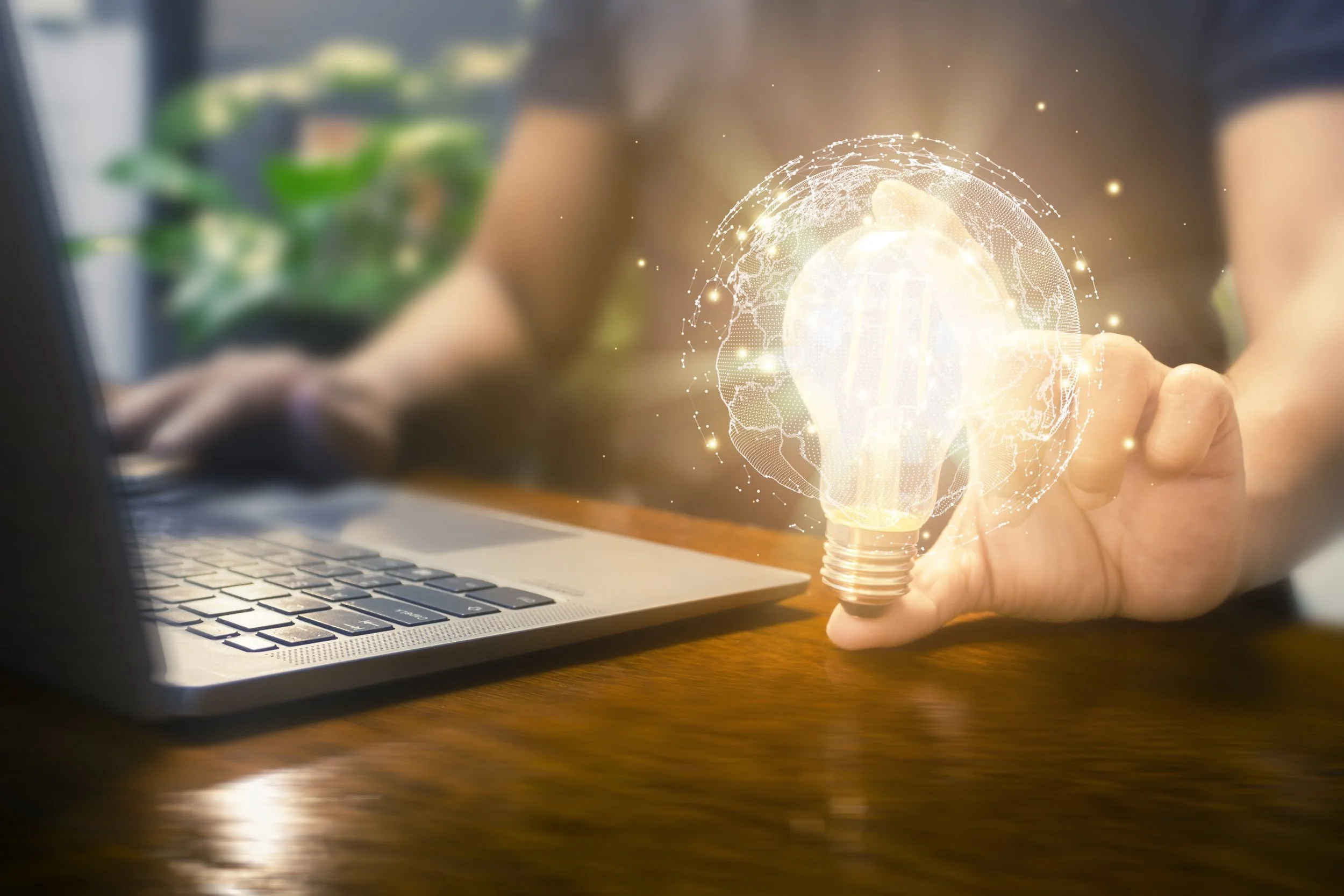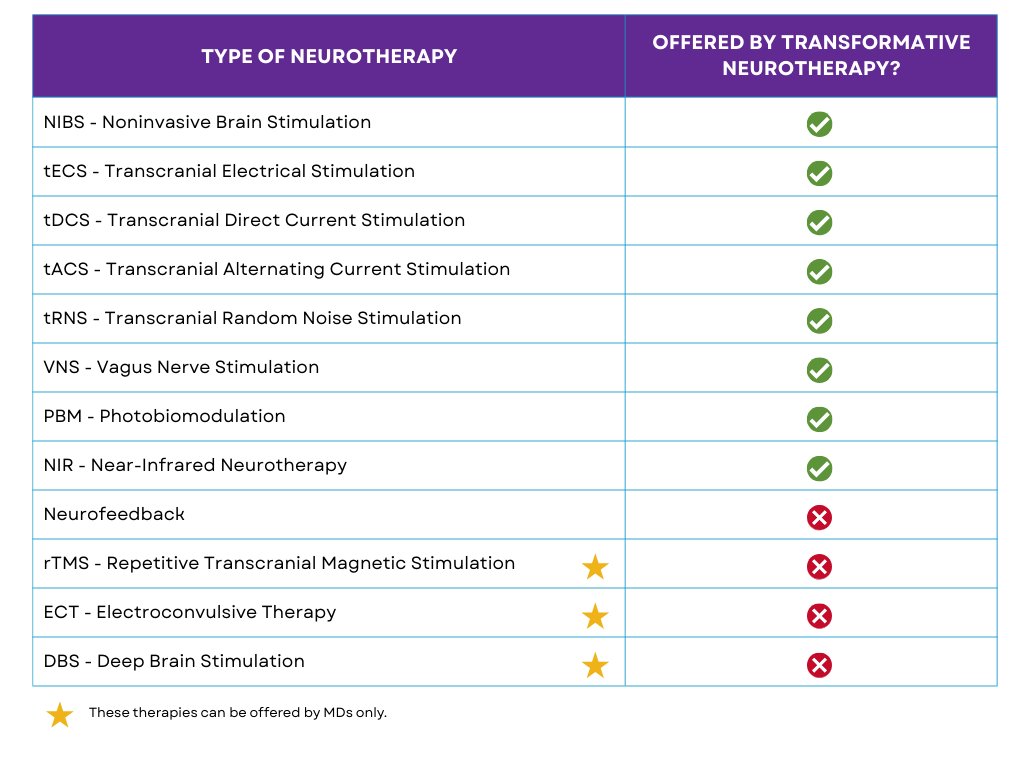NEUROTHERAPY FOR OBSESSIVE COMPULSIVE DISORDER (OCD): RESEARCH
Research shows that neurotherapy may significantly reduce symptoms, improve emotional stability, and enhance overall well-being by targeting the brainwave imbalances associated with obsessive-compulsive disorder (OCD). At Transformative Neurotherapy, we welcome curiosity and invite those who want to dig deeper to explore the research behind our methods, including Neurostimulation and Photobiomodulation (PBM) — all grounded in science that supports their effectiveness in improving mental health.
NEUROSTIMULATION (tECS, tDCs, tACs, tRNs, & VNS)
Adams, T. G., Cisler, J. M., Kelmendi, B., George, J. R., Kichuk, S. A., Averill, C. L., Anticevic, A., Abdallah, C. G., & Pittenger, C. (2021). Transcranial direct current stimulation targeting the medial prefrontal cortex modulates functional connectivity and enhances safety learning in obsessive-compulsive disorder: Results from two pilot studies. Depression and Anxiety, 39(1), 37–48. https://doi.org/10.1002/da.23212
Adams, T. G., Jr., Rippey, C. S., Kelly, A. R., Gold, B. T., & Pittenger, C. (2021). Treatment of obsessive-compulsive disorder with frontopolar multifocal transcranial direct current stimulation and exposure and response prevention: A case series. Brain Stimulation, 14(6), 1431-1433. doi: 10.1016/j.brs.2021.09.008
Brunelin J, Mondino M, Bation R, Palm U, Saoud M, Poulet E. Transcranial Direct Current Stimulation for Obsessive-Compulsive Disorder: A Systematic Review. Brain Sci. 2018 Feb 24;8(2):37. doi: 10.3390/brainsci8020037. PMID: 29495298; PMCID: PMC5836056.
Gao, J., Jia, W., Li, P. et al. Transcranial direct current stimulation enhances exposure–response prevention for contamination-related OCD: a randomized clinical trial. Nat. Mental Health 3, 507–516 (2025). https://doi.org/10.1038/s44220-025-00410-w
Kammen A, Cavaleri J, Lam J, Frank AC, Mason X, Choi W, Penn M, Brasfield K, Van Noppen B, Murray SB, Lee DJ. Neuromodulation of OCD: A review of invasive and non-invasive methods. Front Neurol. 2022 Aug 9;13:909264. doi: 10.3389/fneur.2022.909264. PMID: 36016538; PMCID: PMC9397524.
Pellegrini L, Albert U. Transcranial direct current stimulation (tDCS) in obsessive compulsive disorder (OCD): the state of the art. Italian Journal of Psychiatry. 2024; 10:32-34; doi: 10.36180/2421-4469-2024-7
Rapinesi C, Kotzalidis GD, Ferracuti S, Sani G, Girardi P, Del Casale A. Brain Stimulation in Obsessive-Compulsive Disorder (OCD): A Systematic Review. Curr Neuropharmacol. 2019;17(8):787-807. doi: 10.2174/1570159X17666190409142555. PMID: 30963971; PMCID: PMC7059162.
Shivakumar V, Dinakaran D, Narayanaswamy JC, Venkatasubramanian G. Noninvasive brain stimulation in obsessive-compulsive disorder. Indian J Psychiatry. 2019 Jan;61(Suppl 1):S66-S76.doi: 10.4103/psychiatry.IndianJPsychiatry_522_18 PMID: 30745679; PMCID: PMC6343411.
PHOTOBIOMODULATION (PBM)
Coelho DRA, Salvi JD, Vieira WF, Cassano P. Inflammation in obsessive-compulsive disorder: A literature review and hypothesis-based potential of transcranial photobiomodulation. J Neurosci Res. 2024 Mar;102(3):e25317. doi: 10.1002/jnr.25317 PMID: 38459770.
What Neurotherapy treatments does Transformative Neurotherapy offer?
“Neurotherapy” or “Neuromodulation” is a broad term for a number of different types of treatment options. We’ve outlined below what Transformative Neurotherapy does and does not currently offer.


